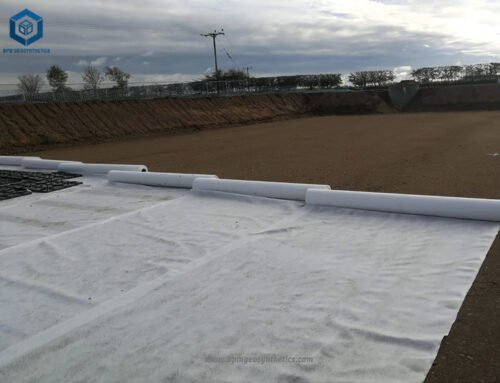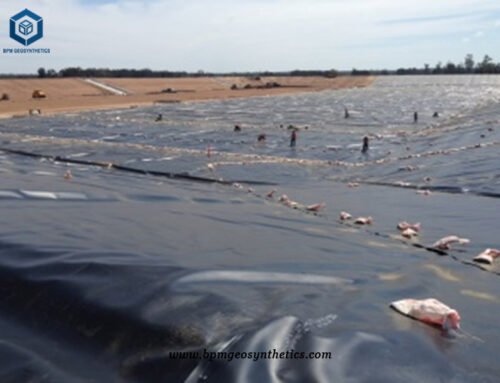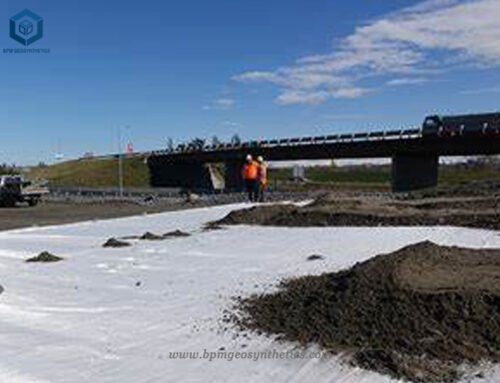1 What is Black Plastic Pond Liners?
Black plastic pond liners are robust and flexible sheets typically crafted from high-density polyethylene (HDPE) or comparable materials. They serve as reliable barriers to prevent water seepage in ponds, water gardens, and various water features. These liners are designed to withstand environmental conditions and offer excellent resistance against UV rays, punctures, and tears.
Black plastic pond liners are popular due to their durability, ease of installation, and versatility. They can be easily shaped and customized to fit different pond sizes and configurations, making them suitable for both small backyard ponds and large-scale water projects.
In addition to their use in creating and maintaining ponds, these liners have found application in waste water treatment projects. The impermeable nature of the liners helps contain and control wastewater, preventing contamination of the surrounding environment. This makes them an ideal choice for ensuring the integrity and effectiveness of waste water treatment systems.
BPM, a prominent black pond liners company who offer pond liner wholesale in Indonesia. Our pond liners are known for their reliability and are widely utilized in waste water treatment projects and other water containment applications.
black plastic pond liners are durable, flexible, and effective in creating watertight barriers. Whether used in ponds or waste water treatment projects, they serve as essential tools in maintaining water quality and preventing environmental contamination.
2 Case Study of Black Plastic Pond Liners for Waste Water Treatment Project in Indonesia
- Location – Indonesia
- Product(s) – Black Plastic Pond Liners
- Application – waste water treatment
3 Why Chose BPM Black Pond Liners Indonesia for Waste Water Treatment Project
When it comes to waste water treatment projects in Indonesia, BPM black plastic pond liners offer several advantages that make them an excellent choice.
Firstly, BPM provides high-quality black plastic pond liners made from brand-new raw materials. These liners are specifically designed to meet and exceed the testing standards of GM13, ensuring their superior performance and reliability.
Secondly, BPM understands the unique requirements of waste water treatment projects in Indonesia, particularly in the palm oil production industry. With extensive experience in this field, BPM can offer tailored solutions and recommend the appropriate thickness of 1.0mm or 1.5mm black plastic pond liners for optimal performance in sewage treatment basins.
Furthermore, BPM is committed to providing excellent customer service. When the client expressed concerns about the pricing, BPM promptly explained the use of top-quality materials and how their products surpassed industry standards. This transparent communication helped the customer understand the value and effectiveness of BPM’s black plastic pond liners.
To further support the customer’s decision-making process, BPM promptly prepared and sent samples for the customer to evaluate. This demonstrates BPM’s dedication to customer satisfaction and ensuring that clients can make informed decisions based on firsthand experience with the product.
Choosing BPM black plastic pond liners for waste water treatment projects in Indonesia offers the assurance of high-quality materials, customized solutions, and attentive customer service. With a commitment to exceeding industry standards and providing reliable products, BPM is a trusted partner in the successful implementation of sewage treatment basins and similar projects.
Indonesia is a big country that produces palm oil, so it also produces a lot of sewage every year. Sewage treatment has become a common job in the local area. Our Indonesian client is the owner of a palm oil production factory. She contacted us about building some basins with geomembranes to treat sewage. After we understand the situation, we recommended 1.0mm or 1.5mm black plastic pond liners to the customer. And we sent the price to the customer. After viewing the quotation, the customer considered that our price was a little higher than other prices. We explained to the customer that the brand-new raw materials were used, and the indicators far exceeded the testing standard of GM13. After hearing this, the customer became very interested and asked us for samples for reference. On the same day, we prepared samples for mailing to customers.
One week later, the customer received the samples. After comparing with samples from other factories, he felt that the surface of our samples was smoother, and the pulling force was better, and it would be safer to use in pools in the future. Finally, the customer chose us and purchased 2*40HQ 1.5mm black plastic pond liners.
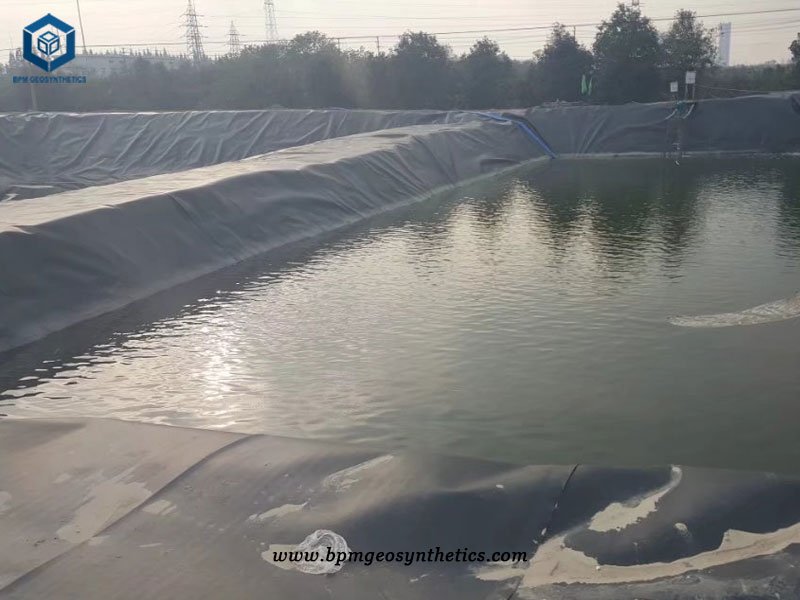

Geomembrane pond liners are composed of high molecular polymer materials and serve as waterproof barriers. They are commonly categorized into three types: low-density polyethylene (LDPE) geomembrane, high-density polyethylene (HDPE) geomembrane, and ethylene-vinyl acetate (EVA) geomembrane. A geomembrane with a thickness of 0.8mm or more is often referred to as a “waterproof board.”
The primary function of a geomembrane is to prevent leakage by blocking potential pathways in earth dams. It achieves this by utilizing the impermeability of the plastic film, which acts as a barrier. Additionally, the geomembrane possesses significant tensile strength and elongation, allowing it to withstand water pressure and adapt to the deformation of the dam body. This combination of properties ensures effective containment and stability.
Non-woven fabric, another component, consists of polymer short fibers that are needle-punched or thermally bonded together. It enhances the tensile strength and puncture resistance of the plastic film when combined with it. The rough surface of the non-woven fabric increases the friction coefficient of the contact surface, contributing to the stability of the composite geomembrane and the protective layer.
Furthermore, both the geomembrane and non-woven fabric exhibit excellent resistance to bacteria and chemicals, making them resistant to corrosion from acids, alkalis, and salts. When used in dark conditions, they have a prolonged service life due to their resilience to adverse environmental effects.
In summary, geomembrane pond liners, consisting of plastic film and non-woven fabric, provide a reliable waterproof barrier. They effectively prevent leakage, withstand water pressure, and adapt to dam deformations. With their corrosion resistance and long-lasting performance, they are a durable solution for various applications requiring waterproofing and environmental protection.
4 Specification of Black Plastic Pond Liners for Waste Water Treatment Project in Indonesia
- Black pond liners Thickness – 1.5mm
- Black plastic pond liners Quantity – 36,000 square meters
- Size – 8m*140m
5 Benefits of Black Pond Liners for Waste Water Treatment Project in Indonesia
he use of black plastic pond liners, specifically HDPE geomembranes, in waste water treatment projects in Indonesia offers numerous benefits:
- High Anti-Seepage Coefficient: HDPE black plastic pond liners exhibit a remarkable anti-seepage coefficient of 1×10-17 cm/s, ensuring effective containment of sewage and preventing leakage into the environment.
- Temperature Resistance: These liners have excellent heat resistance, allowing them to withstand high temperatures up to 110°C, as well as exceptional cold resistance, withstanding temperatures as low as -70°C. This resilience ensures their performance and durability in various operating conditions.
- Chemical Stability: HDPE black plastic pond liners possess excellent chemical stability, making them resistant to corrosion from strong acids, alkalis, and oils. This characteristic ensures long-term performance and reliability in waste water treatment environments.
- High Tensile Strength: The liners exhibit a high tensile strength, enabling them to withstand the demanding conditions of high-standard engineering projects. This strength ensures the integrity and longevity of the liners in waste water treatment basins.
- Weather Resistance and Anti-Aging Properties: HDPE geomembranes have strong weather resistance and anti-aging performance, allowing them to endure prolonged exposure to sunlight and harsh environmental conditions without deterioration. This longevity guarantees the effectiveness and lifespan of the liners in waste water treatment applications.
- Adaptability: HDPE pond liners possess exceptional tensile strength and elongation at break, enabling them to adapt to uneven geological settlement and strain in diverse geological and climatic conditions. This versatility ensures their suitability for various waste water treatment projects.
- Food-Grade Material: HDPE geomembranes use high-quality raw plastic and carbon black particles without any preservatives. HDPE is widely used in food packaging bags and fresh-keeping films, replacing PVC as a safer and more environmentally friendly option. This characteristic highlights the non-toxic and food-grade nature of HDPE black plastic pond liners.
The utilization of HDPE black plastic pond liners in waste water treatment projects in Indonesia offers a range of benefits, including exceptional anti-seepage properties, temperature resistance, chemical stability, high tensile strength, weather resistance, adaptability, and the use of a food-grade material. These advantages contribute to the effectiveness, durability, and environmental safety of waste water treatment systems.
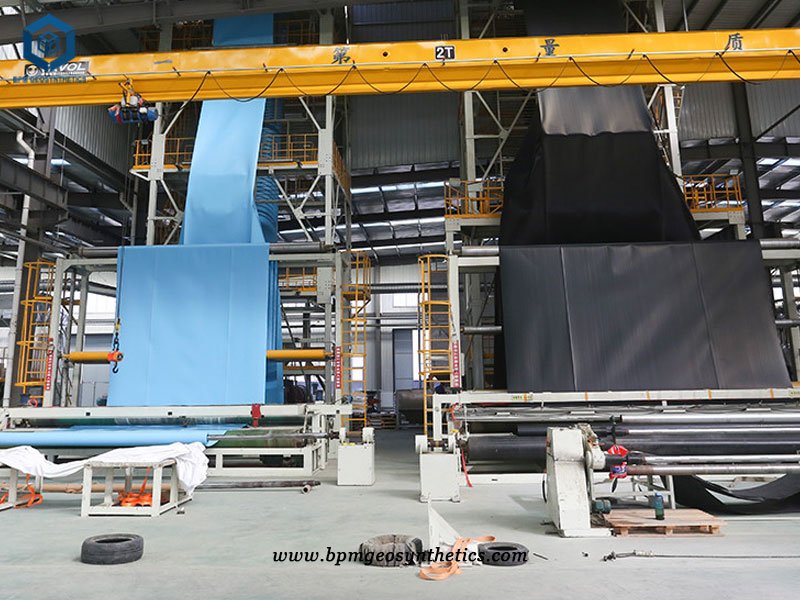
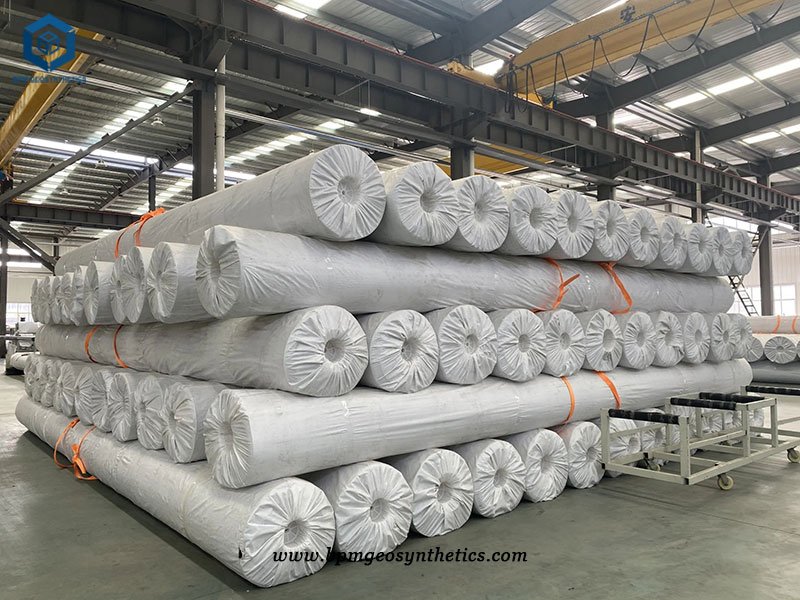
6 Installation of Black Plastic Pond Liner for Waste Water Treatment Project
During the installation of black plastic pond liners for a waste water treatment project, it is essential to follow proper procedures to ensure the integrity and effectiveness of the liner. Here are some guidelines for installation:
1. Transportation: Take precautions while transporting the geomembrane pond liner to avoid contact with sharp objects that could puncture or damage it. Do not drag or drag the liner to prevent any potential harm.
2. Extending the Liner: The liner should extend from the bottom to a high position without being overly tight. Leave a margin of 1.50% to accommodate partial sinking and stretching. The slope should be paved from top to bottom, considering the specific requirements of the project.
3. Longitudinal Joints: Ensure that the longitudinal joints of two adjacent panels are not on a horizontal line. Stagger them by more than 1m to enhance the integrity of the liner.
4. Placement of Joints: The longitudinal joint should be situated more than 1.50m away from the dam foot and the bend foot, and it should be located on a plane for optimal performance.
5. Sequence of Installation: Begin by laying the liner on the side slope, followed by the bottom of the field. When laying the side slope, ensure that the film spreading direction is roughly parallel to the maximum slope line.
6. Acceptance Certificate: Obtain the corresponding acceptance certificate for the civil engineering work before laying the black plastic pond liners. This ensures compliance with project requirements.
7. Cutting and Numbering: Accurately measure the required size of the liner before cutting it. Avoid relying solely on size indications shown in figures. Each section should be numbered and detailed records should be kept using a specific form.
8. Minimize Welding Seams: When laying the geomembrane, aim to minimize the number of welding seams while ensuring the quality of the installation. This helps to save raw materials.
9. Overlapping Width: The joint between two membrane panels should have an overlapping width of at least 10cm. The welding seam should be arranged parallel to the maximum slope, following the direction of the slope.
10. Special Considerations: In corners and deformed areas, try to reduce the length of the joint as much as possible. Avoid setting up welds on slopes with a slope greater than 1:6 within 1.5 meters from the top slope or stress concentration area, unless specifically required.
11. Wrinkle Prevention: During installation, take care to avoid artificial wrinkles in the geomembrane. When the temperature is low, stretch the liner as much as possible and ensure it is laid flat.
12. Surface Protection: After the liner is laid, minimize walking and the movement of tools on its surface. Avoid placing any objects that could cause damage to the liner, ensuring the overall integrity of the anti-seepage membrane.
By following these guidelines, the installation of black plastic pond liners for the waste water treatment project can be carried out effectively, ensuring the longevity and functionality of the liner system.
7 Summary
Black plastic pond liners made from HDPE or LDPE geomembranes are a popular choice for waste water treatment projects in Indonesia. Their waterproofing capabilities, chemical resistance, UV resistance, flexibility, tensile strength, ease of installation, environmental compatibility, and cost-effectiveness make them a reliable and efficient solution for containing and treating waste water effectively.
BPM is the leading geomembrane liner manufactuer and supplier who has been specializing in delivering one stop geosynthetics products and solutions to worldwide customers since its foundation in 2007. BPM had provided many types of effective and state of the art geomembranes, geotextiles, geocells, geosynthetic clay liners (GCLs), drainage boards, geogrids to over 81 countries. BPM Geomembrane is not only manufacturing best quality geosynthetic products but also providing professional design and installation service. OEM, ODM, custom development and fabrication are also available.


